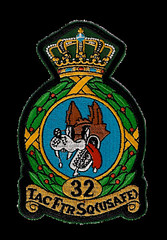 I don’t know when Veterans Day turned into Veterans Week, but it has, so I don’t feel too bad posting a little of my own veteran history one day early.
I don’t know when Veterans Day turned into Veterans Week, but it has, so I don’t feel too bad posting a little of my own veteran history one day early.
In the late 1970s and early 1980s, I was stationed at Soesterberg Air Base in the Netherlands, a brand new F-15 Eagle pilot in the 32nd Tactical Fighter Squadron, the northernmost American fighter squadron in Europe during the Cold War. We were the only unit in United States Air Forces Europe to wear a patch with a royal crest, namely that of the House of Orange (the wolfhound on our patch had been designed by the Disney Studios during WWII). The 32nd TFS had been flying fighters and interceptors out of Soesterberg AB since 1955: F-100 Super Sabres, F-102 Delta Daggers, F-4 Phantom IIs, and finally F-15 Eagles—which is where I came in, as one of the initial cadre of Eagle pilots assigned to the unit after it converted from Phantoms.
Soesterberg Air Base was Dutch, properly called Vliegbasis Soesterberg. The Royal Netherlands Air Force operated from one side of the main runway; the USAF from the other. Our base-within-a-base was called Camp New Amsterdam, but most Americans stationed there called it Soesterberg. The 32nd continued to fly F-15s at Soesterberg until 1994, when the squadron was deactivated and the former Camp New Amsterdam section of the base reverted to the Dutch. The RNLAF eventually moved out too, relocating its operations to another air base in 2008. Today Soesterberg is home to an air museum and a glider port.
The airfield at Soesterberg was established in 1911. The Dutch army took it over in 1913, and it remained under Dutch military control until WWII, when the Germans invaded and occupied the Netherlands. At that point, Vliegbasis Soesterberg became Fliegerhorst Soesterberg, a forward Luftwaffe base. During the war the Germans based a variety of bombers and fighters at the base: the bombers flew missions against England during the Battle of Britain, as well as anti-shipping missions over the English Channel; the fighter unit stationed there scrambled to intercept and shoot down American and British bombers on their way to and from targets in Germany. By the end of 1944 the Allies had bombed Soesterberg so extensively the Germans were no longer able to use it. The Canadians liberated the town and airfield in 1945, and by 1951 Vliegbasis Soesterberg had been rebuilt and was back in operation with the RNLAF.
If you’ve flown in Europe, you know military airfields there are generally small. In the Cold War, most were camouflaged as well, difficult to see from the air unless you knew what to look for. Soesterberg was no exception. When I started flying there, I was amazed by how well the base blended in with its surroundings—I rarely saw the runway until I was within few miles of it, and only then if I was lined up properly. On the Camp New Amsterdam side we operated on old Luftwaffe taxiways, trees pressing in on both sides, just wide enough to accommodate the F-15 (later during my tour, we widened the taxiways and built hardened bunkers, leaving as much tree cover in place as we could). My first and lasting memory of Soesterberg is of those green, leafy woods. My second memory is of the Luftwaffe-era structures that were still there, both on the base and in the town of Soesterberg. There was even an old Allied bomb crater, still visible 40 years later:
A few Luftwaffe aircraft shelters were still standing when I was there, hidden under the trees. We used them to store parts and ground equipment; they were far too small for jet fighters, even the F-100s that had been there in the mid-1950s. Then there were the taxiways, which I’ve mentioned. Here and there were concrete Nazi anti-aircraft artillery emplacements, buried fuel and ammunition bunkers, and underground tunnels once used by Luftwaffe pilots scrambling to their aircraft. In my time the underground structures were mostly full of water, and strictly off-limits. Here’s one:

Just off base, what was once the Luftwaffe Offizierscasino—built with concentration camp slave labor—was now the RNLAF Officers’ Club. Here’s what it looked like when I was there; alongside are two interior shots taken during its glory days:
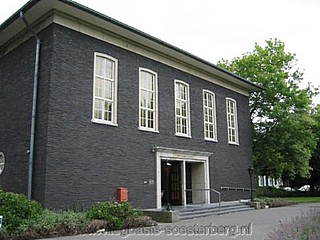 |
 |
 |
We Americans had our own officers’ club, a converted farmhouse in the woods off one end of the main runway. I’m not one hundred percent sure the farmhouse pre-dated WWII, but I’m pretty sure it did.
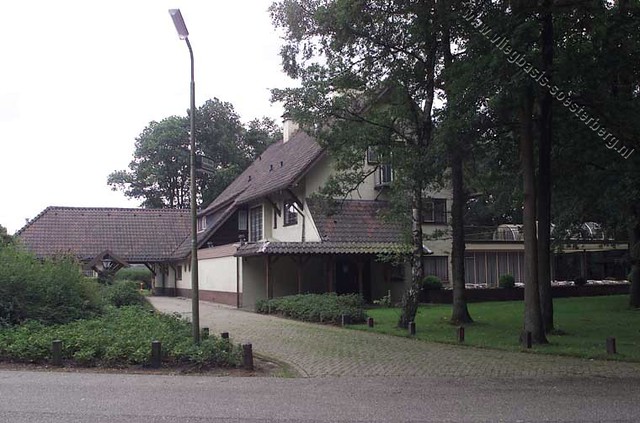
I don’t know what the RNLAF had inside the old offizierscasino (sadly, I never got to go inside), but the centerpiece of our officers’ club was an antique bar with inlaid Dutch tiles. It apparently had been salvaged from some historic bar or hotel in Utrecht or another nearby town; the Heineken Brewery bought it from us for its museum in 1981 and gave us a new bar to replace it.
Here’s an aerial shot from my Soesterberg days: two fully armed 32nd TFS Eagles flying over the preserved windmills at Kinderdijk on a rare sunny day. Captain Steve Spencer is flying tail # 082; Captain Paul Woodford is flying his wing in tail # 091:
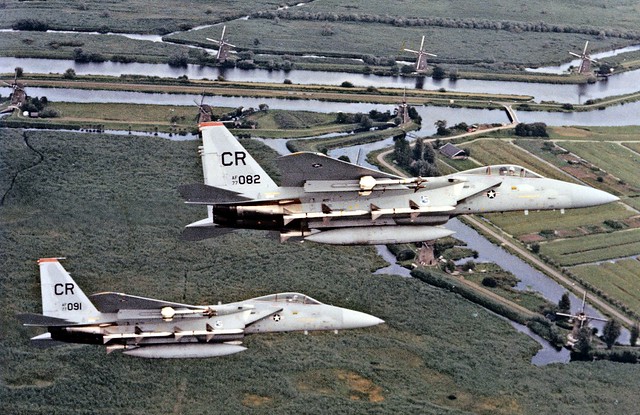
The Luftwaffe-era photos in this post were sent by a friend and fellow veteran, a Royal Netherlands Army officer who was stationed at Soesterberg when I was there, Major Peter van Oest. The photo of the F-15s over the windmills was taken by McDonnell-Douglas factory photographer Bob Williams, flying in the back seat of an F-15B. Other information and photos come from various online sources:
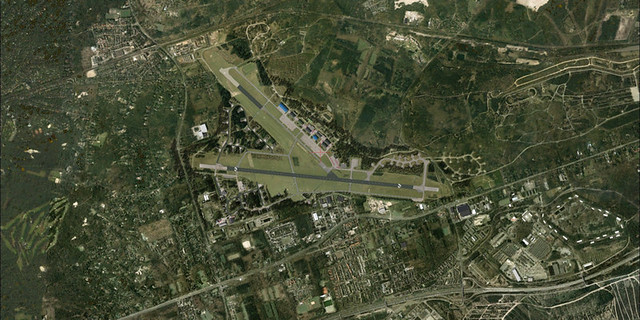
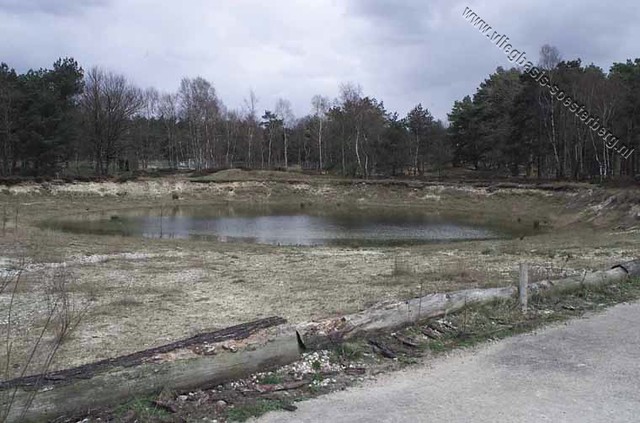
Thanks for the bit of history.
Thanks for this story, I was one of these dutch boys standing at the fence admiring the F-15’s, was a sad day that you guys left.
Great post . Thanks for this story.